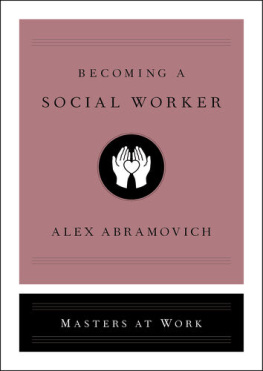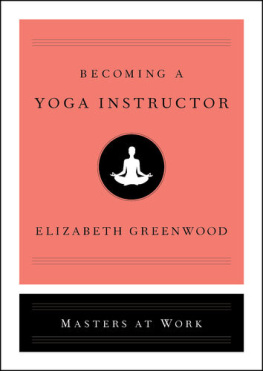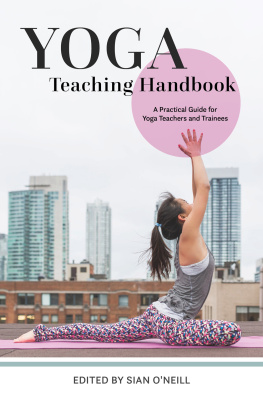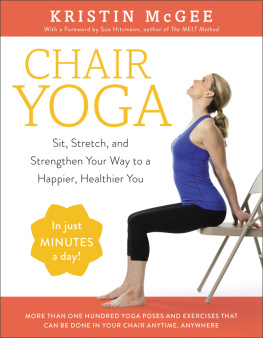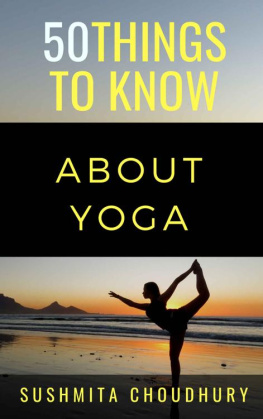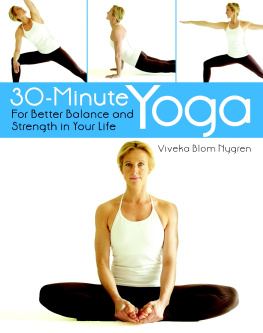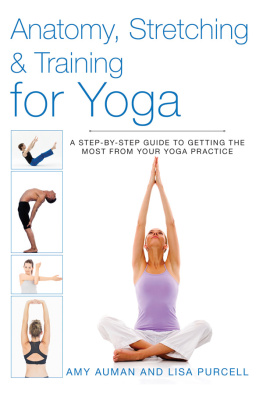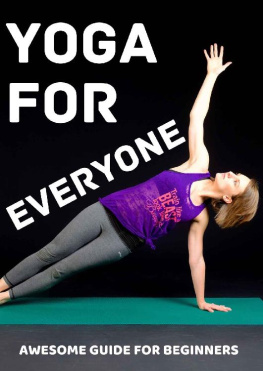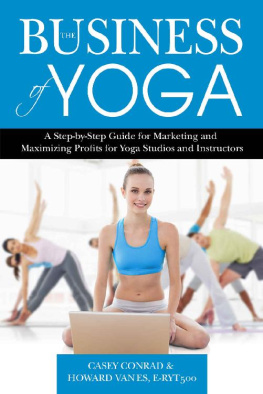B ECOMING A N EUROSURGEON
B ECOMING A V ETERINARIAN
B ECOMING A V ENTURE C APITALIST
B ECOMING A H AIRSTYLIST
B ECOMING A R EAL E STATE A GENT
B ECOMING A M ARINE B IOLOGIST
B ECOMING AN E THICAL H ACKER
B ECOMING A L IFE C OACH
A LSO A VAILABLE
B ECOMING A Y OGA I NSTRUCTOR
B ECOMING A R ESTAURATEUR
B ECOMING A P RIVATE I NVESTIGATOR
B ECOMING A B AKER
B ECOMING A S OMMELIER
B ECOMING A C URATOR
B ECOMING AN A RCHITECT
B ECOMING A F ASHION D ESIGNER

Simon & Schuster
1230 Avenue of the Americas
New York, NY 10020
www.SimonandSchuster.com
Copyright 2019 by Simon & Schuster, Inc.
Interior illustrations copyright 2019 by Donna Mehalko
All rights reserved, including the right to reproduce this book or portions thereof in any form whatsoever. For information, address Simon & Schuster Subsidiary Rights Department, 1230 Avenue of the Americas, New York, NY 10020.
First Simon & Schuster hardcover edition May 2019
SIMON & SCHUSTER and colophon are registered trademarks of Simon & Schuster, Inc.
For information about special discounts for bulk purchases, please contact Simon & Schuster Special Sales at 1-866-506-1949 or .
The Simon & Schuster Speakers Bureau can bring authors to your live event. For more information or to book an event, contact the Simon & Schuster Speakers Bureau at 1-866-248-3049 or visit our website at www.simonspeakers.com.
Jacket design by Alison Forner
Jacket images by Avicons and Rangepuppies/Getty Images
Library of Congress Cataloging-in-Publication Data
Names: Greenwood, Elizabeth, 1983- author.
Title: Becoming a yoga instructor / Elizabeth Greenwood.
Description: First Simon & Schuster hardcover edition. | New York : Simon &
Schuster, 2019. | Series: Masters at work
Identifiers: LCCN 2018049828 (print) | LCCN 2018053012 (ebook) | ISBN 9781501199943 (Ebook) | ISBN 9781501199936 (hardcover)
Subjects: LCSH: Yoga teachersVocational guidance.
Classification: LCC RA781.67 (ebook) | LCC RA781.67 .G74 2019 (print) | DDC 613.7/046dc23
LC record available at https://lccn.loc.gov/2018049828
ISBN 978-1-5011-9993-6
ISBN 978-1-5011-9994-3 (ebook)
INTRODUCTION
T he first time I encountered this thing called yoga was in the pages of my beloved Seventeen magazine at the end of the last century. I recall a photo spread of a rosy-cheeked teen in leggings and a tank top, assuming positions that seemed easy yet would provide covetable benefits: lying on the floor and pushing her thighs up into a small backbend to ease menstrual cramps and lower back pain, balancing on one foot while holding the other to improve concentration, even simply extending both arms out to the sides to strengthen and lengthen those muscles. As a mildly depressed and uncoordinated aspiring juvenile delinquent, team sports seemed lame to me. But these graceful exercises seemed doable. I practiced them on the carpet of my bedroom, and, whether due to a placebo effect or not, they felt good.
After a few weeks, I logged on to my America Online account via dial-up modem to check out the yoga classes in my midsized city in central Massachusetts. Zip. The closest offering was by a former dance instructor who taught Hatha yoga (for strength and relaxation! her website proclaimed) in her living room in a town thirty minutes away. The cost was $5 for sixty minutes. I begged my mom to drive me, and because I have a very good mom, she did.
Alongside a handful of suburban moms, I learned a flow of yoga poses recognizable to any beginner: downward dog, warriors one and two, tree pose... The forty- and fifty-something ladies found it funny that an angsty fifteen-year-old would be so into this gentle exercise. But in spite of the awkward tableau, something about the practice felt nothing short of magical. When I clambered back into my moms car an hour later, I felt a subtle elation, a fuzzy warmth in my limbs, and a respite from the anxiety that so often plagued me. Now, looking back, I realize what was so special about yoga then, and what remains wondrous about the practice for me today, more than twenty years later: my body and my brain were in the same place at the same time.
S EARCH #YOGA ON I NSTAGRAM today and youll see your screen awash in a sea of lean muscles, toned midriffs, and gams encased in neon leggings pressing up into an elegant handstand on a secluded beach. In the early twenty-first century, yoga has become synonymous with flexibility, radiant wellness, and perhaps a dash of levitating-above-it-all smugness. Yogas ancient roots and its sheen of vague spirituality imbue the practice with gravitas you dont quite get, say, just lifting weights or shaking your booty in Zumba class. Its more than just exercise: its a philosophy, an identity, a lifestyle.
But in spite of its image of impossibly healthy, green-juice-sipping, backbending exclusivity, yoga has never been more ubiquitous in the United States. A 2016 study conducted by Yoga Journal and the nonprofit Yoga Alliance found that fifteen percent of Americans practice yogaa whopping 36.7 million peopleand seventy-two percent of those practitioners are women. Yogis practice at home, at the gym, and in studios, community centers, and parks. You can find a yoga class from Skokie to St. Petersburg, or peruse thousands of free instructional videos online. You can practice any number of novelty forms, including goat yoga, aerial yoga, beer yoga, chair yoga, yoga raves, hip-hop yoga, laughter yoga, tantrum yoga, and naked yoga. Its become a $16.8 billion industry.
Your average class at the gym might look something like this: Yoga mats facing the front of the room. A teacher leading the class in a centering exercise, perhaps breathwork or a chorus of om s. She will demonstrate poses, beginning with a series of sun salutations, meant to raise body heat and energy. Perhaps the instructor walks around the class to make minor adjustments to forms, pulling back a hip here, dropping a shoulder there. You may hear a Sanskrit word or two namaskar A or virabhadrasana. Once the body is warm and loose, students might drop to the floor to do deeper stretching: pigeon pose, perhaps, or backbends. The ujjayi breathor oceanic inhale and exhaleleads the student from one pose to the next. Class will end with everyones favorite, savasana, or corpse pose, where the class gets to retreat to kindergarten and lie on their mats with eyes closed.
In other words, our modern Western understanding of yoga centers on the asanas, or the poses we make with our body, and the deep breaths we take to bring our physical self and mind into union. But this emphasis on physicality is a relatively recent development in yogas over two-thousand-year history. Training teachers to make yoga into a career is an even more recent development.
Fortunately, unlike a fashion model or a ballerina, you can become a yoga teacher at any point in your life. But how to begin? What questions should you ask yourself prior to enrolling in your first teacher training, and how do you choose the best one for you? What will you actually learn? And once youve invested time and money in your education, where do you go from there? How do you set yourself apart from the thousands of teachers who are certified every year?
In the following pages I will answer these questions and many more. But for now, lets start with some basics. Becoming a Registered Yoga Teacher requires two hundred hours of study in a training program certified by Yoga Alliance, the largest worldwide organization to audit yoga teachers and schools to be sure theyre up to snuff. If you want to teach at a studio or a gym, graduating from one of these programs is essential. You can take your basic two-hundred-hour teacher training course as a monthlong retreat in Costa Rica or as a ten- to twelve-weekend program at your local studio. But wherever and however the training is offered, Yoga Alliance requires its certified programs to provide five areas of instruction: one hundred hours of techniques, training, and practice, which is where the bulk of asana work occurs; twenty-five hours of teaching methodology; twenty hours of anatomy and physiology; thirty hours of yoga philosophy, lifestyle, and ethics, which might include studying classic texts like the Bhagavad Gita and

